Jaipur - the pink city ain't bad
We know that we are getting close to Jaipur when we pass the Amber Fort, which we are scheduled to visit tomorrow morning, and the Jal Mahal or Water Palace which sits in the middle of Man Sagar lake.
Jaipur is the capital and largest city of Rajasthan, founded in 1727 by Maharaja Sawai Jai Singh II, the ruler of Amber. The city really is pink, well, a beautiful dusty pink. There are a number of explanations for this, ranging from the practical, to cut down glare; to the devotional, Jai Singh II's apparent homage to Lord Shiva, whose favourite colour was reputedly terra cotta. Others believe Jai Singh wanted to imitate the colour of the sandstone used in the forts and palaces of the Mughal empire. Another popular explanation is that during the Raj the city was freshly painted and paved with pink gravel to welcome Edward VII when he visited in 1876. Since that time residents are required to maintain and paint their buildings using this colour.
Entering the city one thing that is striking, compared to other old Indian cities, is both the width and regularity of the roads and streets. In this respect Jaipur was considered a model of town planning - the first planned city in India which is based on Hindu systems of town planning which draws on principles set out in the Shilpa-shastra, of dividing sites into grids or mandalas.
The central axis of the city runs from East to West between the Suraj pol or Sun Gate and the Chandpol or Moon Gate. This is intersected at right angles by two roads dividing the city into nine almost equal sized mandalas. The hills prevented the completion of the north west mandala and so an extra mandala was added in the south east. Following the principles of the Shilpa-shastra the widths of the street were fixed: the main streets of the city were 111ft. wide, secondary streets 55ft. wide and the lanes 27ft. wide.
Golden Tulip - Hotel with a view
We check into our hotel. It's good to relax after our road trip.
After unpacking I head for the rooftop observation deck and the kids join me for a relaxing swim in the pool. The hotel rooftop affords a 360 degree view of Jaipur. The hills enclose the city like a horse shoe and from this height it's easier to see how the city has been laid out in grids. Looking below we can see that life goes on with people buying fruit and vegetables from
the roadside stalls.
Swimming pool
The rooftop observation deck is empty, as is the swimming pool, which we have all to ourselves. It's like being a millionaire with a private penthouse.
Who wants to be a millionaire?
As if by serendipity, after an early dinner we check out what is on local TV and are pleasantly surprised to see a familiar face. Since retiring as the Director of Aimhigher Hampshire & Isle of Wight, Tony Acland has taken over the role of stunt double for the famous Indian film actor - the "angry young man" of Bollywood and TV personality - Amitabh Bachchan!
They can be seen (apparently they take in turns, just to be mischievous) hosting the Indian version of Who Wants to be a Millionaire? which is called Kaun Banega Crorepati (Who will become a Millionaire?; more popularly known as KBC.
Jaipur - The pink city
Thursday, August 11, 2011
 Jaipur, Rajasthan, India
Jaipur, Rajasthan, India
Other Entries
-
1A Passage to India
Aug 083 days prior London, United Kingdomphoto_camera0videocam 0comment 0
London, United Kingdomphoto_camera0videocam 0comment 0 -
2Looking for the real India...
Aug 092 days prior Delhi, Indiaphoto_camera8videocam 0comment 0
Delhi, Indiaphoto_camera8videocam 0comment 0 -
3New day - New Delhi
Aug 101 day prior Delhi, Indiaphoto_camera25videocam 0comment 0
Delhi, Indiaphoto_camera25videocam 0comment 0 -
4On the road to Rajasthan
Aug 11earlier that day Delhi, Indiaphoto_camera9videocam 0comment 0
Delhi, Indiaphoto_camera9videocam 0comment 0 -
5Jaipur - The pink city
Aug 11 Jaipur, Indiaphoto_camera14videocam 0comment 0
Jaipur, Indiaphoto_camera14videocam 0comment 0 -
6From Palace of Winds to Stargazing and City Palace
Aug 121 day later Jaipur, Indiaphoto_camera49videocam 0comment 0
Jaipur, Indiaphoto_camera49videocam 0comment 0 -
7From pink city to ghost city
Aug 132 days later Jaipur, Indiaphoto_camera9videocam 0comment 0
Jaipur, Indiaphoto_camera9videocam 0comment 0 -
8The Jewel in the Crown
Aug 132 days later Fatehpur Sikri, Indiaphoto_camera22videocam 0comment 0
Fatehpur Sikri, Indiaphoto_camera22videocam 0comment 0 -
9A grand night in Agra
Aug 132 days later Agra, Indiaphoto_camera7videocam 0comment 0
Agra, Indiaphoto_camera7videocam 0comment 0 -
10Taj Mahal - Crown of palaces
Aug 143 days later Agra, Indiaphoto_camera24videocam 0comment 0
Agra, Indiaphoto_camera24videocam 0comment 0 -
11All aboard the Shatabdi Express
Aug 154 days later Agra, Indiaphoto_camera2videocam 0comment 0
Agra, Indiaphoto_camera2videocam 0comment 0 -
12On the road from Jhansi to Khajuraho
Aug 154 days later Jhansi, Indiaphoto_camera8videocam 0comment 0
Jhansi, Indiaphoto_camera8videocam 0comment 0 -
13Temple "..."in the presence of God"
Aug 154 days later Khajuraho, Indiaphoto_camera19videocam 0comment 0
Khajuraho, Indiaphoto_camera19videocam 0comment 0 -
14Temples
Aug 165 days later Khajuraho, Indiaphoto_camera35videocam 0comment 0
Khajuraho, Indiaphoto_camera35videocam 0comment 0 -
15From spiritual life to village and school life
Aug 165 days later Rajnagar, Indiaphoto_camera14videocam 0comment 0
Rajnagar, Indiaphoto_camera14videocam 0comment 0 -
16Aarti on the Ganges
Aug 165 days later Varanasi, Indiaphoto_camera17videocam 0comment 0
Varanasi, Indiaphoto_camera17videocam 0comment 0 -
17Morning ritual on the Ganges
Aug 176 days later Varanasi, Indiaphoto_camera26videocam 0comment 0
Varanasi, Indiaphoto_camera26videocam 0comment 0 -
18Sarnath - Starting the Wheel of the Dharma
Aug 176 days later Sarnath, Indiaphoto_camera31videocam 0comment 0
Sarnath, Indiaphoto_camera31videocam 0comment 0 -
19Leaving Varanasi or bye bye Benares
Aug 187 days later Varanasi, Indiaphoto_camera0videocam 0comment 0
Varanasi, Indiaphoto_camera0videocam 0comment 0 -
20Transit Delhi
Aug 187 days later Delhi, Indiaphoto_camera1videocam 0comment 0
Delhi, Indiaphoto_camera1videocam 0comment 0 -
21Overnight luxury in boom town
Aug 187 days later Gurgaon, Indiaphoto_camera0videocam 0comment 0
Gurgaon, Indiaphoto_camera0videocam 0comment 0 -
22Return trip to Delhi airport
Aug 198 days later Gurgaon, Indiaphoto_camera2videocam 0comment 0
Gurgaon, Indiaphoto_camera2videocam 0comment 0 -
23From Delhi to Dabolim
Aug 198 days later Delhi, Indiaphoto_camera1videocam 0comment 0
Delhi, Indiaphoto_camera1videocam 0comment 0

 Jaipur, Rajasthan, India
Jaipur, Rajasthan, India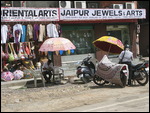
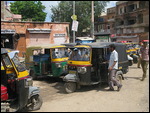
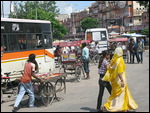
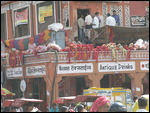
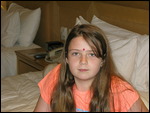
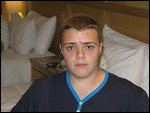


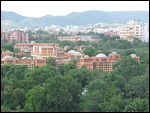
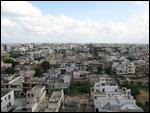
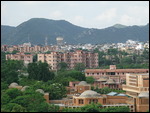
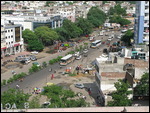
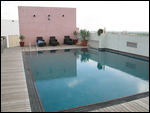
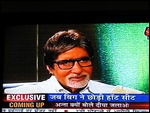


2025-05-23